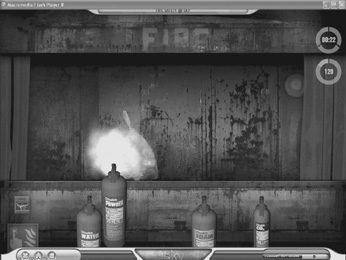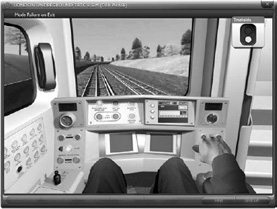Serious games - learning for the igeneration
(Published in ‘Development and Learning in Organizations’ 2009)
What revolution?
It happened overnight. For centuries we had been training staff but suddenly they were expected instead to take responsibility for their own learning. Today self-paced ‘‘eLearning’’ programs have replaced many traditonal classroom courses.
But if all we have done is immerse employees in electronic versions of courses, what have we achieved? If the experience demands no more than reading, listening and watching a sequence of screens, are they really learning? More crucially, does scoring 100 percent in a multi-choice test of memory mean a person is competent? It is pointless filling people’s heads with facts and figures. Information is usually free and accessible anywhere, at any time. When we need facts, two minutes on Google or the company intranet and we have them. This is not the challenge.
Your current workforce may tolerate passive eLearning material but an incoming younger generation of employees will not. These people have been using a mouse since they could walk. They are impatient yet have high expectations. They want to be challenged, to explore, to be entertained, to compete and to win. They are the ‘‘iGeneration’’ and we had better wake up to one of the non-linear ways they like to learn – by playing computer games.
In this article, we firstly define ‘‘serious gaming’’ before providing you with a couple of practical organizational examples to show what can be done. A checklist of tips is provided for those considering this approach and, finally, we take a look at the outlook for ‘‘serious games’’ approaches.
What is a serious game?
A ‘‘game’’ is a structured activity whose components are rules, goals, challenges and interactivity. A ‘‘serious’’ game has a serious business purpose.
For the purposes of this paper, we are excluding the ‘‘serious games’’ seen in 3D social worlds such as ‘‘Second Life’’ or in dedicated, high budget 3D simulations such as those developed for military training. Our focus is on developing corporate games aimed at training and assessment in specific tasks.
A serious game immerses the learner in a familiar yet virtual environment in which they can make mistakes, ask for help, refer to documentation and demonstrate their competence in a way that answering multi-choice quiz questions never can. Serious games can give safe, cost-effective practice in completing hazardous or inaccessible tasks. Novices receive all the assistance they need while experts tackle tasks unaided.
The beauty of the serious game is that it allows your learners to apply new knowledge and make decisions using their best judgment, whilst receiving expert guidance. Does this make them fully competent? No, but they will be far better equipped to tackle real workplace activities as a result of it. And their performance scores will give you great insight into each person’s progress.
Case study 1 – BSkyB ‘‘Fire Safety’’ game


BSkyB is Europe’s leading commercial satellite broadcasting company. Their obligation was to train staff to spot fire hazards, deal with a fire if trapped and safely evacuate a building.
Their business is entertainment so their employees also expect learning to be fun.
The program presents a series of games and challenges set within realistic BSkyB environments, modeled in 3D. Dynamic ‘‘flying eye’’ journeys move learners between each area of a building with special effects simulating fire, smoke and the selection and use of extinguishers. Each game briefly equips learners with core principles and then poses a range of scenarios to tackle. There are decisions to be taken, often against the clock and dramatic outcomes from poor choices.
Learners are applying the knowledge they already have (or have just gained) through exposure to challenges and safe experimentation. Constructive feedback is given on all actions and they may attempt scenarios as many times as they wish. Their overall score is tracked as they tackle the games and is based on factors such as elapsed time and the wisdom of their actions.
Case study 2 – London Underground cab simulator




The London Underground Jubilee Line has been equipped with a new Transmission-Based Train Control system. This comprises new control centre and trackside communications equipment and, in the driver’s cab, a computer-driven ‘‘Train Operator Display’’.
To familiarise drivers with the system’s operating procedures, a 3D virtual cab is now used which immerses them in highly realistic, interactive scenarios and tracks their decisions.
The simulator allows the driver to pan 360 degrees around the cab to operate controls and other equipment as they see fit. All actions are tracked and hints are available when needed. The program poses seven different scenarios, each demanding a different set of appropriate actions. The driver may give up at any time and a ‘‘best practice’’ response is displayed.
Top ten ingredients for effective serious games
- Realism. Graphical 3D workplace scenes must be of the highest quality to ensure they are taken seriously. If an environment already exists, consider using 360 degree photography (cheaper than 3D) to build engaging, interactive panoramas.
- Set job-relevant tasks. Set challenges typical of real world activities, not implausible examples that need huge leaps in imagination and are difficult to relate to.
- Challenge the learner… to perform well. Ensure they are measured against targets such as task completion time, responsiveness to changing events, etc.
- Immerse learners immediately. Do not force learners to read many pages of explanations before starting the game. Start with a ‘‘bang’’ and get them doing something quickly.
- Let experts excel. Allow experienced people to demonstrate their competence without prompting. Nothing frustrates more quickly than unwanted help.
- Give hints and tips. Give incremental advice on what they ought to do next. Emulate the friendly advice they would receive from a patient, experienced colleague.
- Provide reference material. Allow learners to use the real material they will have available in the workplace (manuals, web pages, etc). Learning where to go to find resources and practicing how to use them may be as important as completing the tasks.
- Continuous feedback on performance. Players perform best when they know how they are performing. Show elapsed time, time remaining, penalties incurred, etc. These add excitement and challenge and are the spur to repeat the game to improve a score.
- Record and report actions and outcomes. Display scores and actions taken at the end.
Include items tested/replaced, Hints requested, Library visits, etc. Score actions with a bonus (eg: correct part replaced) or a penalty (unsafe action taken). - Include the unexpected… Use impact to create lasting memories with intriguing, unexpected events or incidents. For example, equipment that exploded when unsafely operated or returning to a smoke-filled burning building terminating the game as the room fills with smoke and escape becomes impossible.
Outlook for ‘‘serious gaming’’
A major obstacle stands in the way of the widespread adoption of serious games.. Many organizations are obliged by law to ensure safety compliance by conducting training courses which lead learners through every procedure. The audited outcome is then a recorded completion history and quiz score but as discussed earlier, what does a 95 percent score actually tell us?
We need to re-assess what we are training our staff to be able to do, not what we want them to prove they know. So, a far more valuable (and measurable) learning objective for a serious game might be to ‘‘Diagnose an equipment failure within a job time of 15 minutes and repair it at a cost of no more than 100 Euros.’’ Whereas today’s equivalent learning objective would probably have to be limited to ‘‘Be able to match fault symptoms to a list of possible causes’’.
In the future we shall see far greater use of small serious games; ‘‘nuggets’’ of interaction which learners will play on hand-held devices. At the other end of the scale, there will be a maturing of real-time ‘‘virtual worlds’’ such as ‘‘Second Life’’. The quality of graphical imagery will improve through higher bandwidth connections and organizations will begin to commission or build their own bespoke game environments. In particular, the potential for multi-department, role-playing activities is huge, with on-line expert guidance during the game and the possibility of recording behavior and actions for review and discussion when the game is over.
Organizations hoping to attract, develop and retain people in the ‘‘igeneration’’ category will need to take this ‘‘gaming’’ approach to learning seriously.
